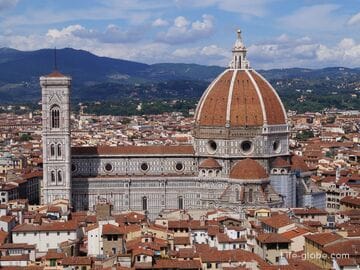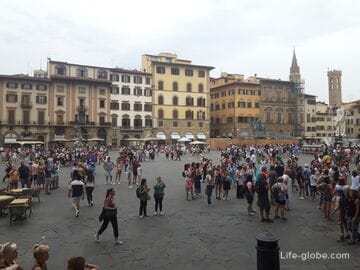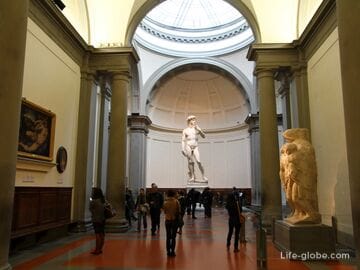The Arno is a river in the Tuscany region of Italy, which originates at Monte Falterona in the Casentino area, passes through Florence and Pisa, and flows into the Tyrrhenian Sea at Marina di Pisa.
Arno occupies an important place in the history of Florence and the whole of Tuscany as a whole, because its waters alternately brought people's love and hatred: benefits from trade and disasters from floods. So, in Florence and in many other cities and towns along the river there are signs reminding about the level of floods at different times.
Today, the Arno River is an integral symbol and one of the main attractions of Florence.
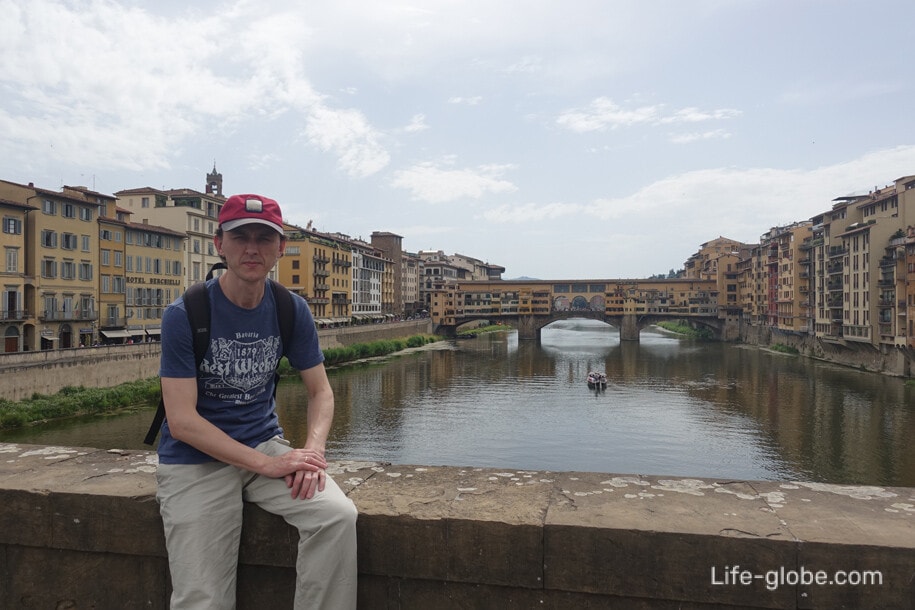
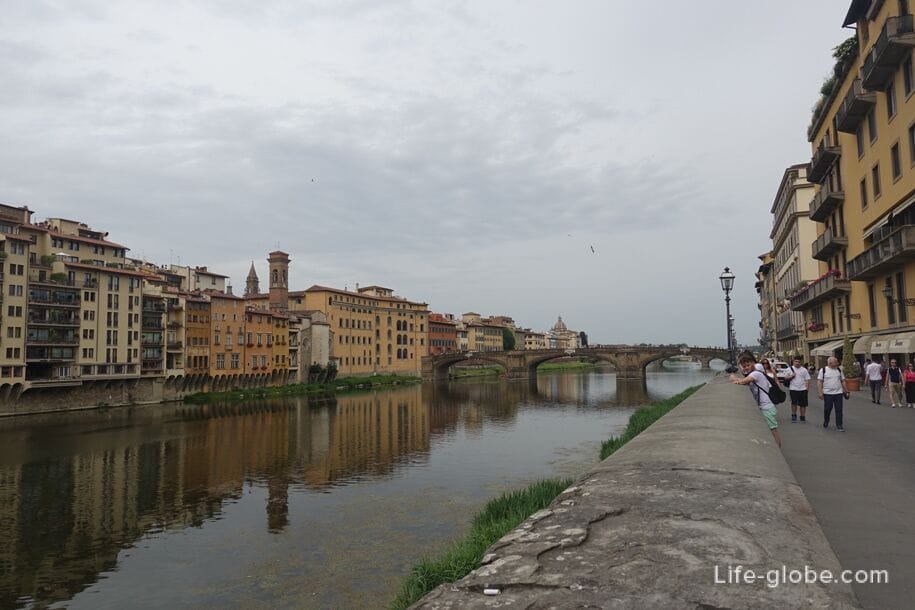
In the capital of Tuscany, Florence, the Arno River flows through the entire city and divides the historical center into two parts, where numerous attractions rise above the waters of the river.
The right (northern) bank of the Arno River attracts the most tourists, because it is here, in the historical center of Florence, that the main attractions of the city are concentrated.
The left bank of the Arno (south) is the hilly and green area of Oltrarno, where the best gardens of Florence are spread out. Also, this part of the city gives unsurpassed views of the city and the Arno River. From the best viewing points: Michelangelo Square, Bardini Garden, Boboli Gardens, Rose Garden and Forte Belvedere.

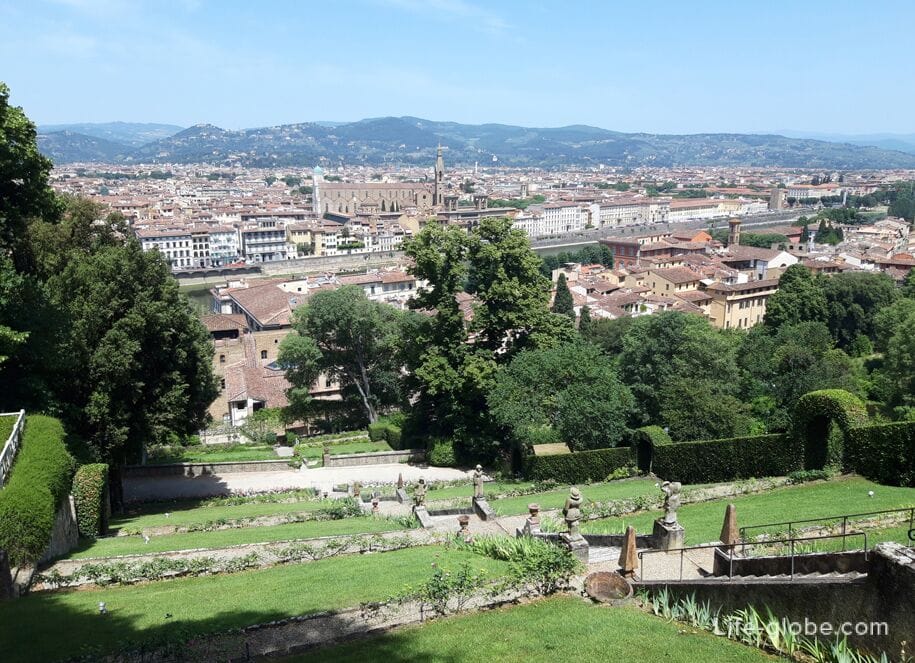
There are bridges spanning the Arno River, among which one of the unique in the world is the medieval Ponte Vecchio (Old Bridge), with characteristic jewelry stores in houses built right on the bridge, and thanks to which the bridge is also called "Golden".
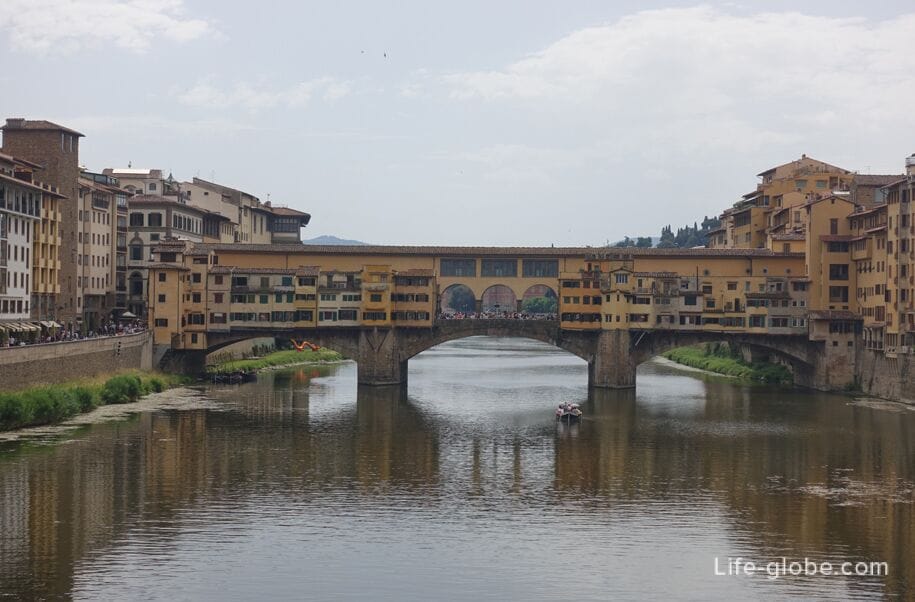
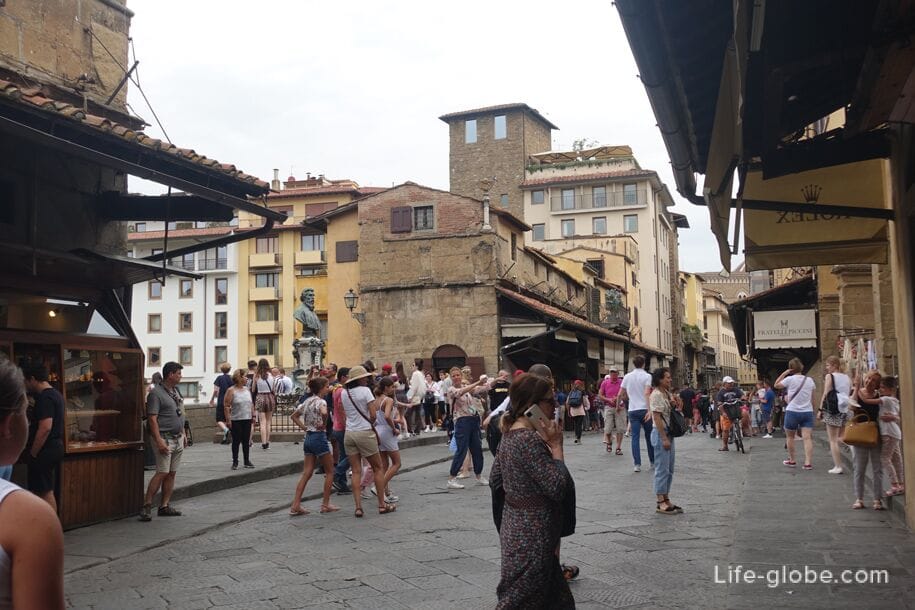
Near the bridge and over the Vecchio Bridge runs part of the Vasari Corridor (Corridoio Vasariano), built in 1565 and representing a raised covered gallery connecting Palazzo Vecchio with Palazzo Pitti.
Today, the corridor is part of the Uffizi Museum complex (Museo degli Uffizi) and it can be visited.
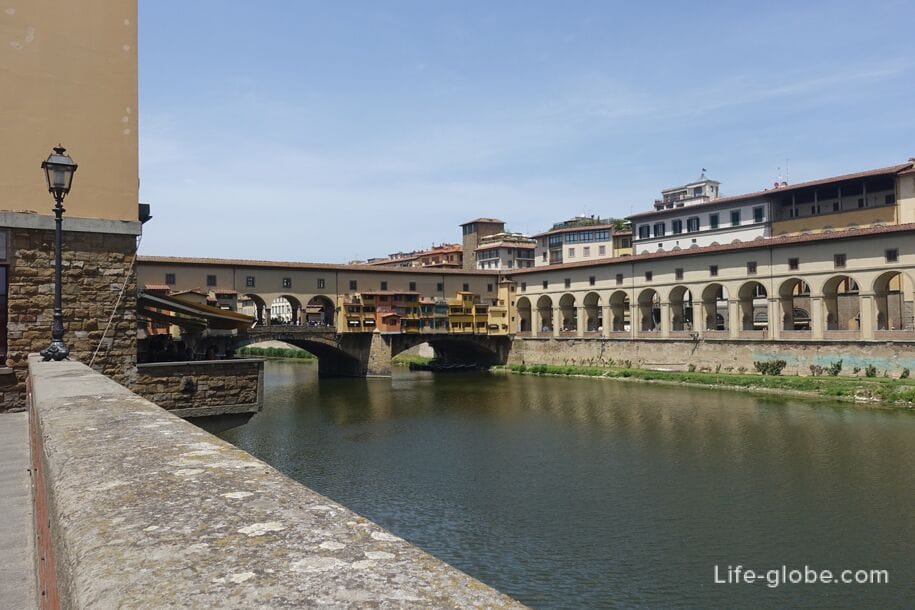
To the west of the Vecchio Bridge , two more historical bridges cross the Arno River:
- Santa Trinita Bridge, translated from Italian: the Bridge of the Holy Trinity (Ponte Santa Trinita, Ponte Santa Trinita) is an arched bridge of the Renaissance, having a beautiful sculptural design;
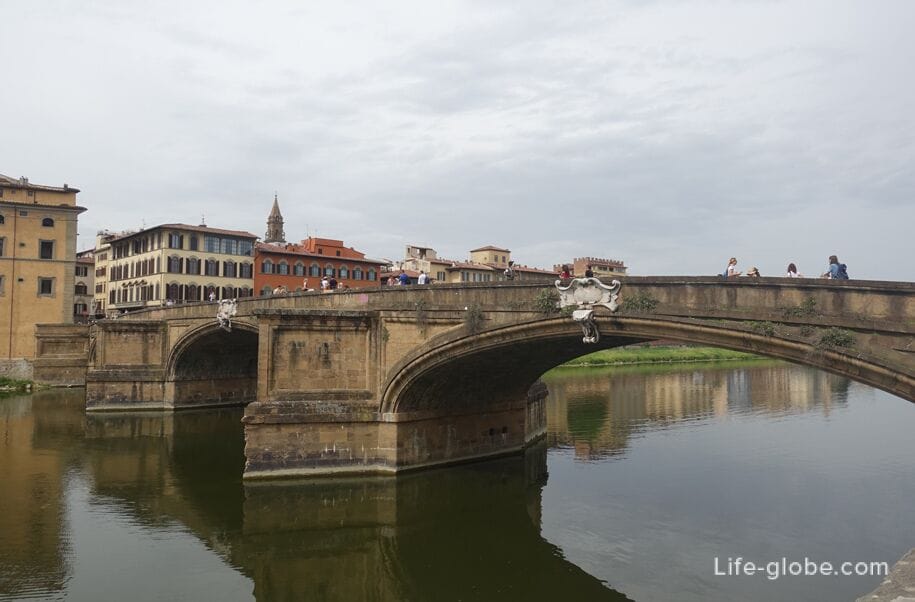

- The five-arch bridge of Carraia (Ponte alla Carraia, Ponte alla Carraia) is one of the historical bridges over the Arno River in Florence.
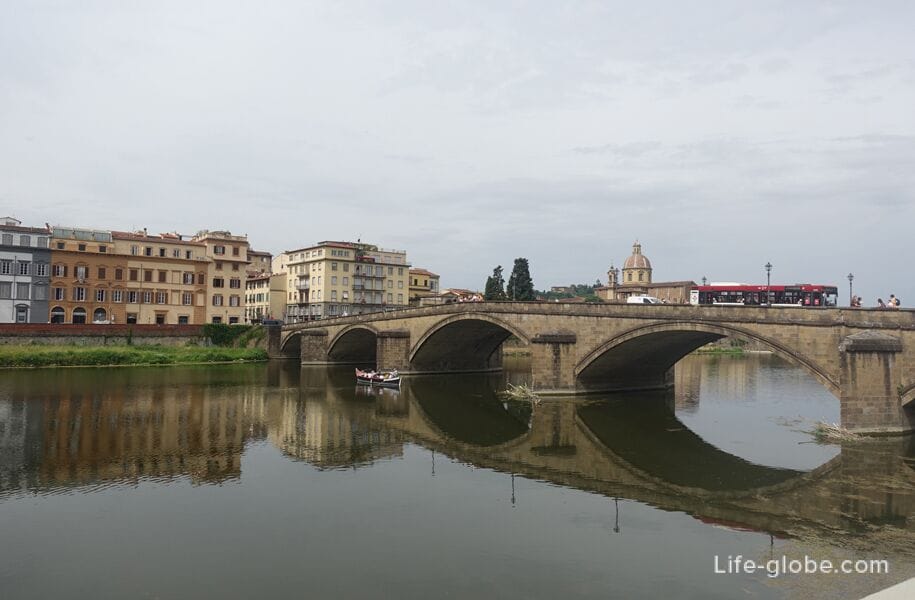
The bridges over the Arno offer beautiful views of the river with embankments and bright historical buildings.
In some areas, there are no embankments near the river waters, and buildings approach directly to the river, which only enhances the impression of the river and Florence as a whole.
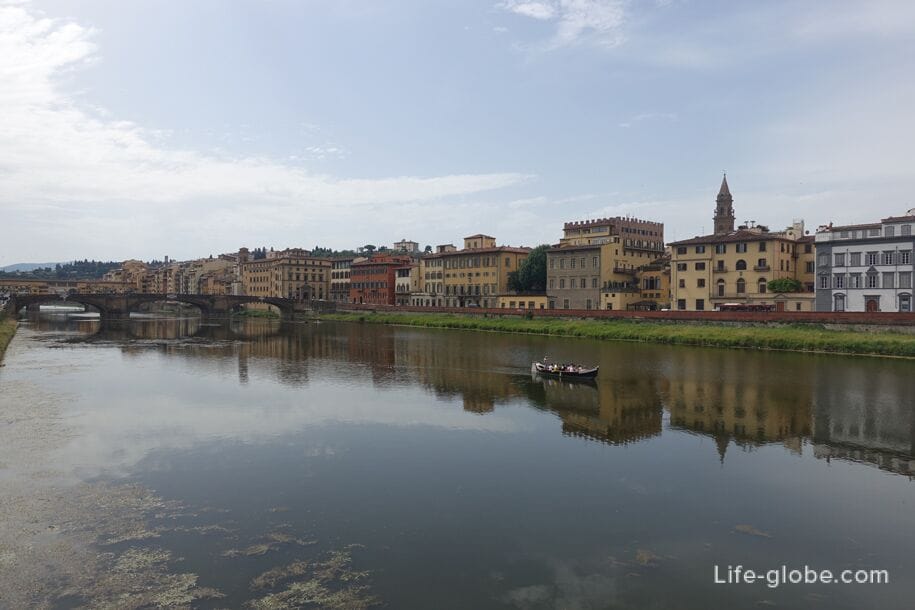
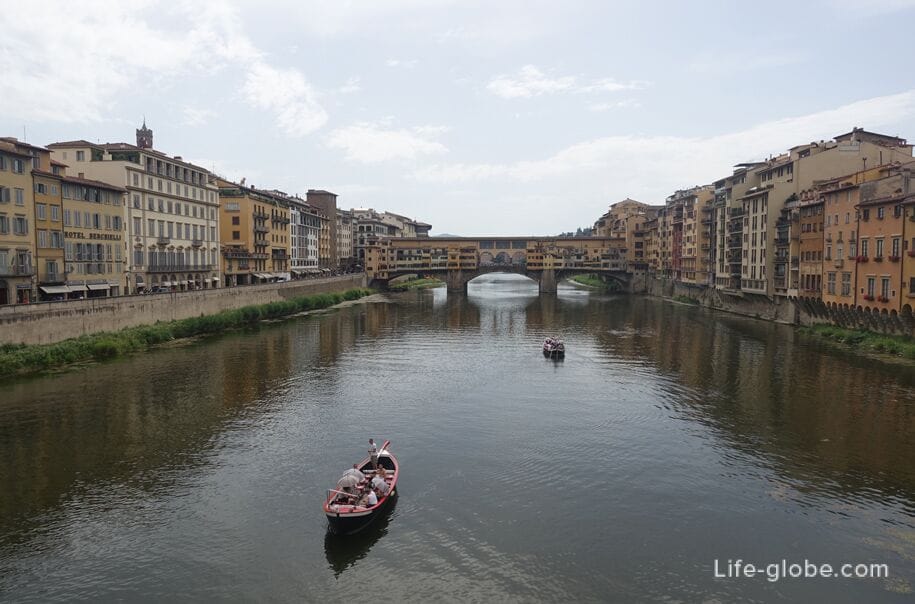
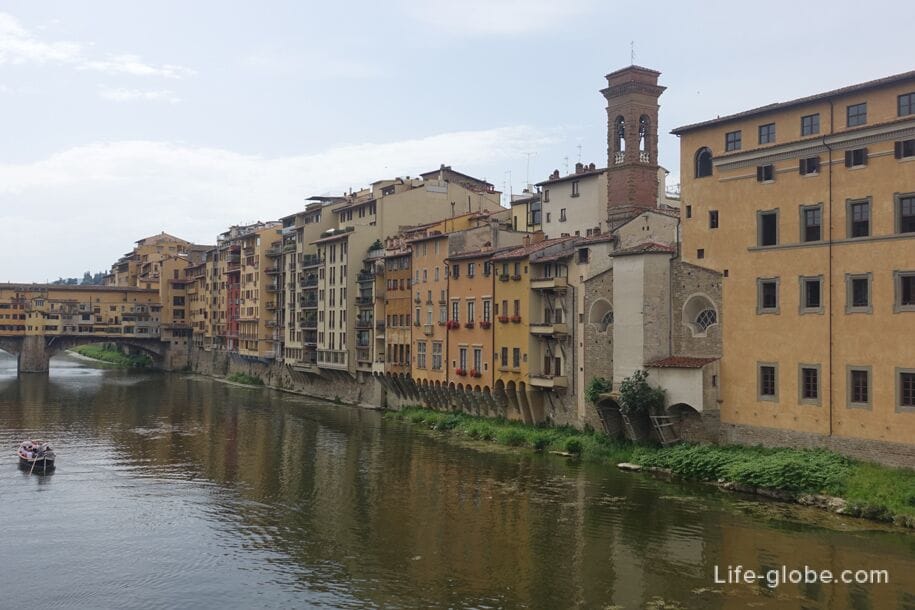

Along the banks of the Arno River, there are notable embankments-roads called Lungarno (Lungarno).
The avenues of Lungarni were streamlined during the nineteenth century. Along the avenues: historical buildings, palaces, churches, squares, cafes, restaurants, shops and accommodation facilities (hotels, apartments)
On the north bank of the River Arno in the historic center, from the west, after Parco delle Cascine, pass: Lungarno Amerigo Vespucci (with Ognissanti Square) to Goldoni Square with a monument to the Venetian playwright and librettist Carlo Goldoni, then follow Lungarno Corsini (where one of the most luxurious private palaces in Florence is located - Corsini Palace), Lungarno degli Accaiuoli , Lungarno degli Archibugieri (where the Vasari Corridor passes and leads to Uffizi Gallery), Lungarno Anna Maria Luisa Medici (where Galileo Museum is located within the walls of the former Castellani Palace) , Lungarno Dias (where the neoclassical building of the Chamber of Commerce is located), Lungarno delle Grazie (with the oratory of Santa Maria delle Grazie), Lungarno della Zecca Vecchia (dominated by the building of the National Central Library of Florence).
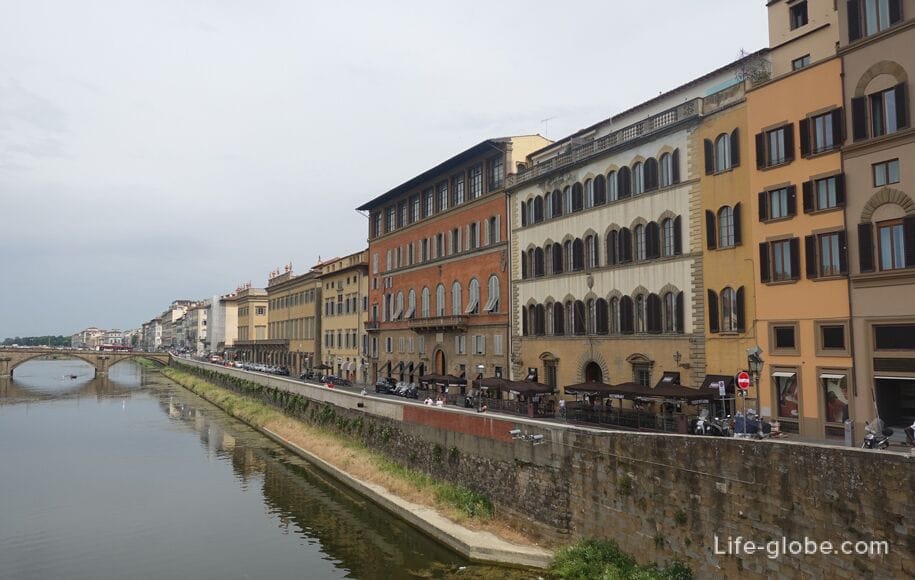
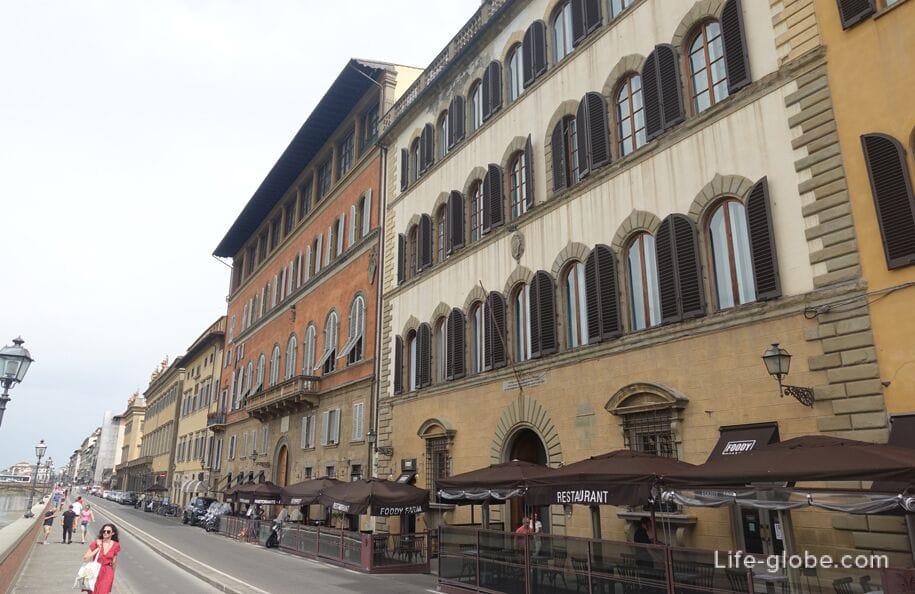
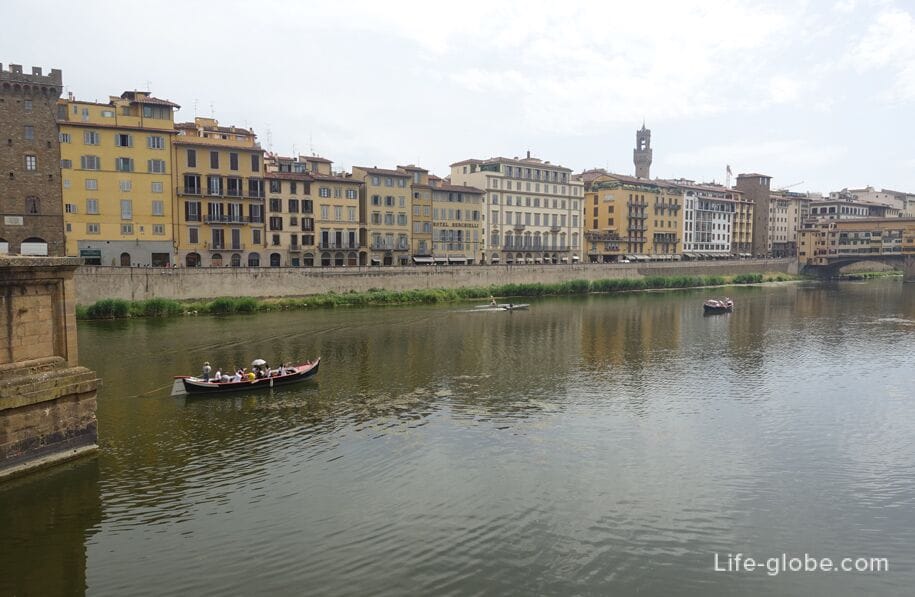
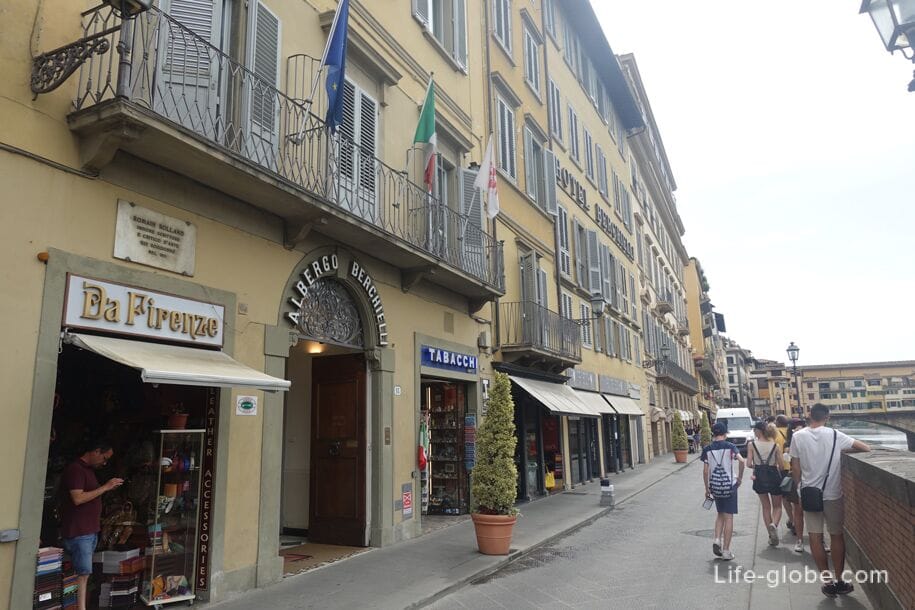
On the banks of the Oltrarno, from the west, the city center can be considered to start from the Santa Rosa Tower (Tabernacolo di Santa Rosa, Tabernacle di Santa Rosa), which is part of the defensive walls of Florence and a remarkable niche (edicule) of 1856, in which there is a fresco depicting a Pieta with Saints John the Theologian and Mary Magdalene, attributed to Ridolfo del Ghirlandaio (early 16th century).
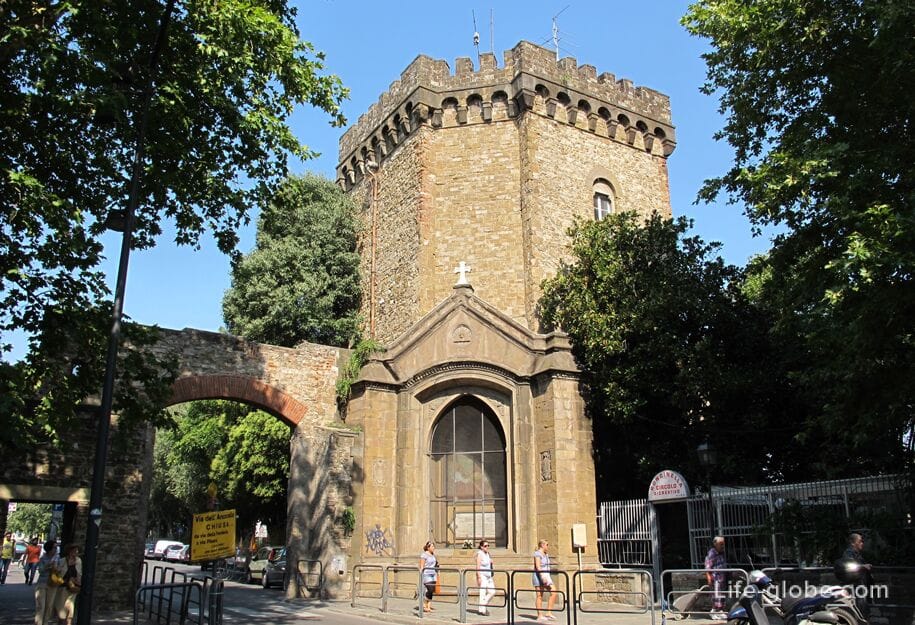
After the Santa Rosa Tower, Lungarno Sodernini and Guicciardini Lungarno follow.



Then from the Frescobaldi Square to the Ponte Vecchio, the shore is occupied by dense rows of buildings approaching in the water, and therefore impassable.

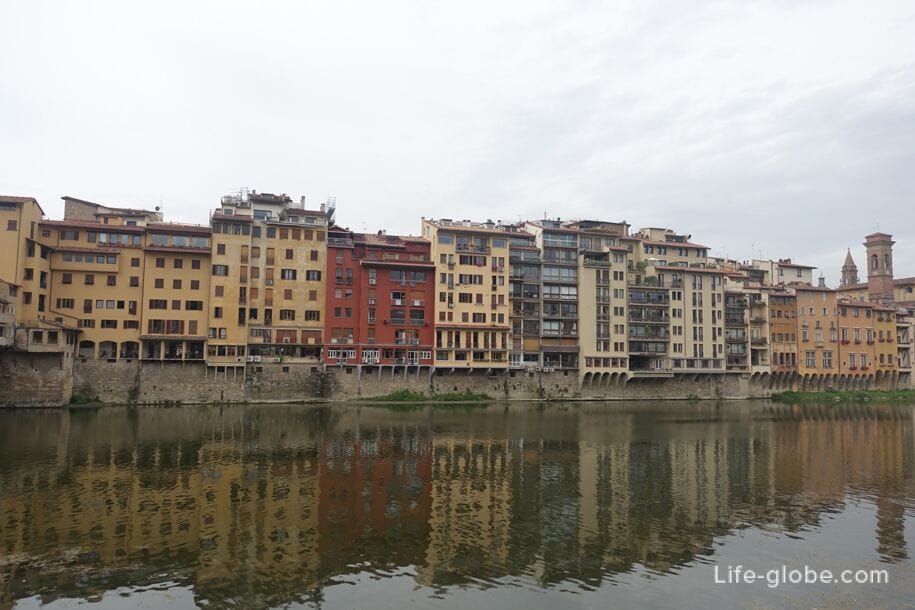
Then there are Lungarno Torrigiani and Lungarno Serristori with the Serristori Palace and the gate tower of St. Nicholas.
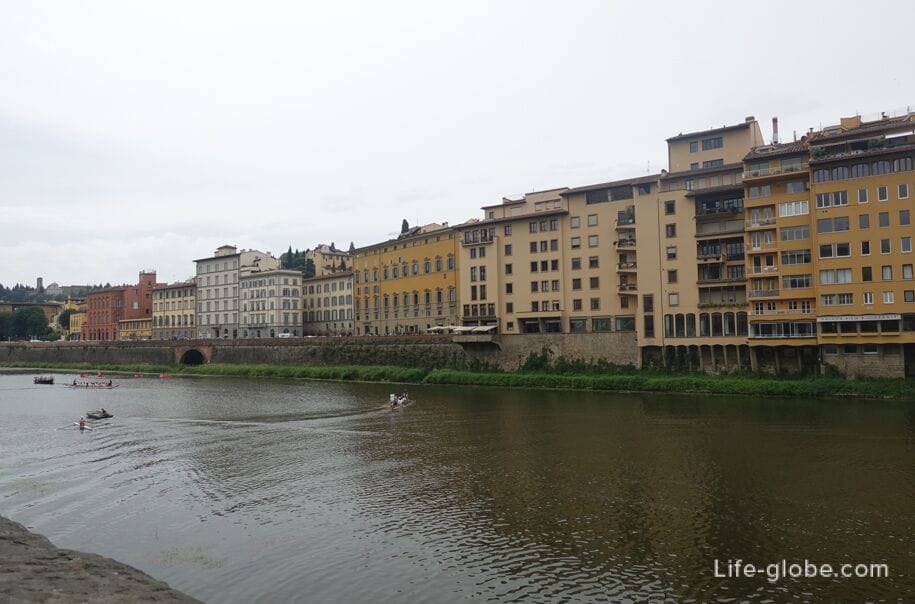
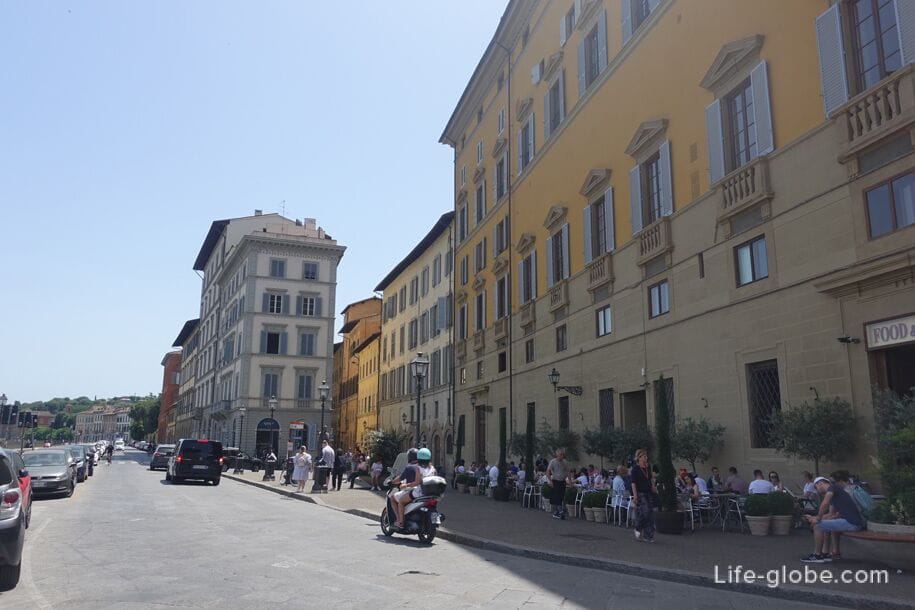
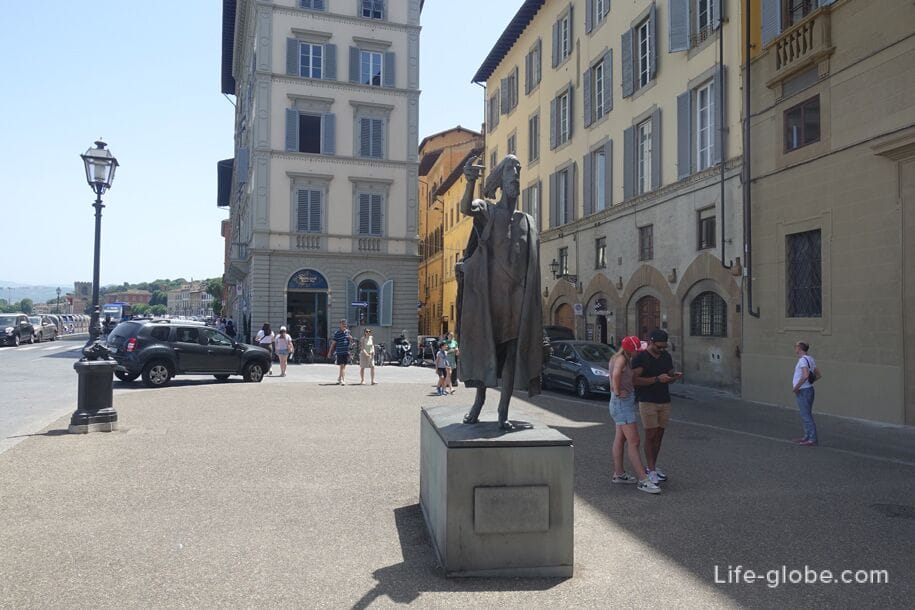
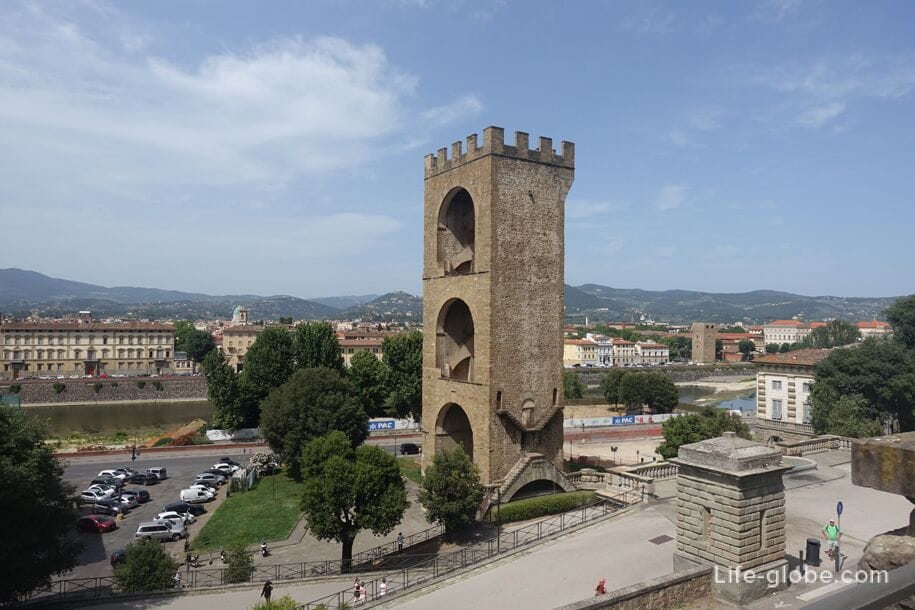
All accommodation facilities in Florence (hotels, apartments, guest houses, etc.), including in the historical center of the city, near the Arno River and further away from those, can be viewed and booked here






